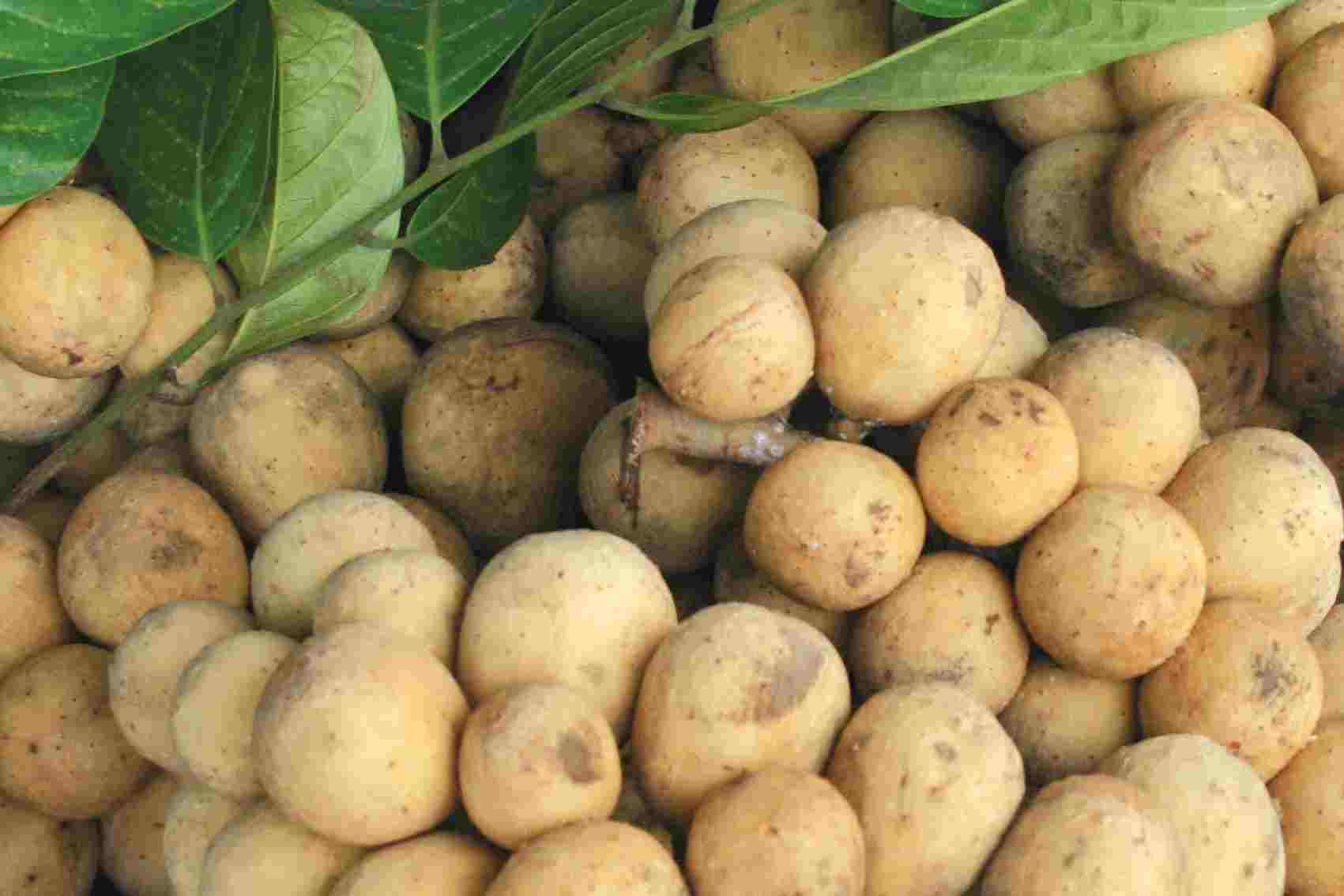
The longan ("dragon eyes") is so named because of the fruit's resemblance to an eyeball when it is shelled (the black seed shows through the translucent flesh like a pupil/iris). The seed is small, round, and hard, and of an enamel-like, lacquered black. The fully ripened, freshly harvested shell is bark-like, thin, and firm, making the fruit easy to shell by squeezing the fruit out as if one is "cracking" a sunflower seed. The longan tree is a tropical tree native to southern China. It is also found in Southeast Asia.
Longan, also known as "Dragon's eye," is a fruit native to Southern Asia. The scientific name of longan is dimocarpus longan. The longan tree belongs to the Sapindaceae family, and it is a close relative of the lychee fruit. Longan is characterized by its sweet, translucent flesh that surrounds a central black seed. The fruit is small, round, and has a slight yellowish-brown color when mature. It is a favorite fruit in China, Vietnam, Thailand, Taiwan, and the Philippines. The fruit has a great flavor, and it is used in a wide range of culinary dishes and traditional medicine.
Longan trees grow in subtropical and tropical regions and can reach up to 25 meters in height. The tree thrives in warm and humid climates and requires regular rainfall for optimal growth. The fruit is usually harvested in late summer or early fall, and it is a great way to enjoy a sweet and refreshing treat during the hot summer months.
Longan is packed with essential nutrients that contribute to good health. The fruit is a rich source of vitamin C, vitamin B6, vitamin B2, and vitamin B1, potassium, copper, and iron. These nutrients provide numerous benefits to the body, including boosting the immune system, enhancing brain function, improving digestion, and regulating blood pressure.
Moreover, longan is also known for its medicinal properties. The fruit has been used in traditional Chinese medicine for centuries to treat various ailments. Longan contains antioxidants that help eliminate free radicals in the body, preventing cell damage and reducing the risk of chronic diseases such as cancer. Additionally, the fruit contains polyphenols that help reduce inflammation and improve cardiovascular health.
Longan is also a great fruit for enhancing cognitive function. The fruit contains gallic acid, a compound that helps protect the brain from damage caused by free radicals. Additionally, the high levels of vitamin B6 found in longan play a crucial role in the formation of neurotransmitters, the chemicals that transmit signals between nerve cells in the brain.
Longan is a versatile fruit that can be consumed in different ways. The fruit can be eaten fresh, dried, or canned. Fresh longans have a sweet, juicy, and aromatic taste. Dried longans have a more intense flavor and are often used in traditional medicines and desserts. Canned longans are less sweet, but they still retain most of their nutritional benefits.
Longan is used in various culinary dishes in Asian cuisine. In China, it is commonly used in sweet soups and can be added to teas and desserts. In Thailand, the fruit is used in salads, stir-fries, and curries. In Vietnam, longan is often used in fruit salads alongside other tropical fruits like mango and papaya.